Welcome to our comprehensive guide on creating an effective letter template for a patient cardiology assessment. In this article, we'll explore the essential components of a patient referral letter, ensuring that all critical information is included to facilitate a smooth assessment process. We'll also touch on the importance of clear communication between healthcare providers and patients in managing cardiovascular health. So, if you're looking to craft a letter that sets the stage for a successful cardiology evaluation, keep reading!
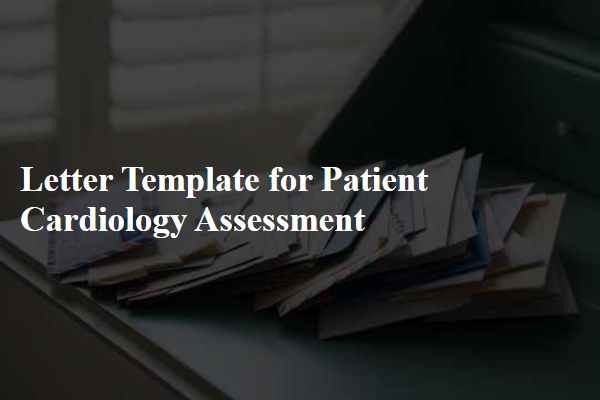
Patient Information and Identification
In a comprehensive cardiology assessment, crucial patient information includes personal identification data such as name, age, gender, and contact details. Clinicians should collect medical history indicating previous cardiovascular conditions, risk factors such as hypertension (often defined by a systolic pressure above 130 mmHg), diabetes mellitus (glucose levels exceeding 126 mg/dL fasting), and familial cardiac history. Vital signs, including heart rate -- typically between 60 and 100 beats per minute at rest, and blood pressure measurements showing systolic and diastolic values, are essential for evaluating cardiovascular health. Additionally, current medications must be documented to identify possible drug interactions or side effects impacting cardiac function. Relevant lifestyle factors such as smoking status (considering that tobacco use significantly increases cardiovascular risk), exercise frequency (recommended at least 150 minutes of moderate-intensity aerobic activity weekly), and dietary habits should also be clearly outlined to inform diagnostic and treatment strategies.
Referral Details and Reason for Consultation
The cardiology assessment for patients requires meticulous documentation of referral details and the rationale for consultation. Patients often present with symptoms like chest pain, shortness of breath, or palpitations, which necessitate evaluation by a cardiologist. Referral information typically includes the referring physician's name, contact details, and specific concerns or findings from previous examinations. Conditions such as hypertension (blood pressure readings exceeding 130/80 mm Hg) or history of myocardial infarction (heart attack) are critical indicators for referral. The referring professional may also provide insights into patient lifestyle factors, such as smoking history or family history of cardiovascular disease (i.e., genetic predisposition) that can influence the cardiologist's assessment and management plan. Comprehensive clinical data aids in determining the necessity for diagnostic tests like echocardiograms, stress tests, or electrocardiograms (ECGs) to evaluate heart function and structure.
Medical History and Current Symptoms
A comprehensive cardiology assessment includes a detailed review of medical history and current symptoms. Patients presenting for evaluation typically provide information on pre-existing conditions such as hypertension (high blood pressure) or hyperlipidemia (high cholesterol), both significant risk factors for heart disease. Recent symptoms, including chest pain (angina) or shortness of breath (dyspnea), are crucial for determining the severity of cardiovascular issues. Other pertinent factors include lifestyle habits like smoking, physical activity level (frequency of exercise), and dietary choices, alongside family history of cardiovascular diseases (examples include a parent's heart attack before age 60). Accurate records of current medications, including dosage and frequency, help clinicians evaluate potential drug interactions affecting cardiac health. Important diagnostic tests like ECG (electrocardiogram) results may supplement this assessment, indicating any abnormal heart rhythms or previous myocardial infarction (heart attack). Such a thorough approach ensures a complete understanding of the patient's cardiovascular status and guides treatment planning.
Diagnostic Test Results and Evaluations
Cardiology assessment results indicate significant findings from the diagnostic tests performed on the patient. The echocardiogram revealed a left ventricular ejection fraction (LVEF) of 45%, indicating heart function that falls below the normal range (55-70%). Electrocardiogram (ECG) analysis showed frequent premature ventricular contractions (PVCs) occurring at a rate of 12% which can increase the risk of arrhythmias. The Holter monitor recorded 24 hours of continuous heart rhythm, highlighting periods of atrial fibrillation with a mean heart rate of 110 beats per minute. Blood tests for cardiac biomarkers, including troponin levels, were within normal limits, yet B-type natriuretic peptide (BNP) levels were elevated at 150 pg/mL, suggestive of heart failure. These results necessitate further evaluation and monitoring of the patient's cardiovascular status to inform treatment options effectively.
Treatment Recommendations and Follow-up Plan
The cardiology assessment report provides essential insights into the patient's cardiovascular health status. Key findings from diagnostic tests, such as echocardiograms or stress tests, indicate heart function metrics like ejection fraction (normal range: 55% to 70%). Treatment recommendations may include lifestyle modifications, dietary changes emphasizing low sodium intake (less than 2,300 mg per day), and regular physical activity, incorporating at least 150 minutes of moderate exercise weekly. Pharmacological interventions, such as ACE inhibitors or beta-blockers, may be prescribed based on individual health conditions, including hypertension or heart failure. The follow-up plan should include scheduling appointments every three to six months to monitor changes in health status, with additional assessments of blood pressure, cholesterol levels, and compliance checks on medication regimens. Clear communication about symptoms indicating worsening conditions, such as shortness of breath or chest pain, necessitates immediate medical attention.
Letter Template For Patient Cardiology Assessment Samples
Letter template of follow-up cardiology assessment for ongoing treatment.
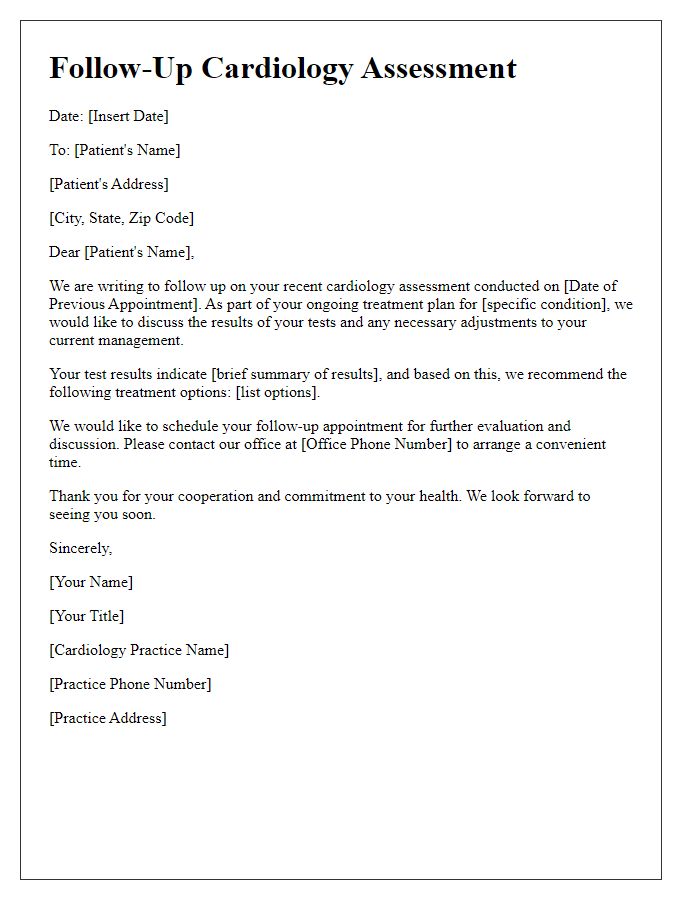
Letter template of comprehensive cardiology assessment for annual review.
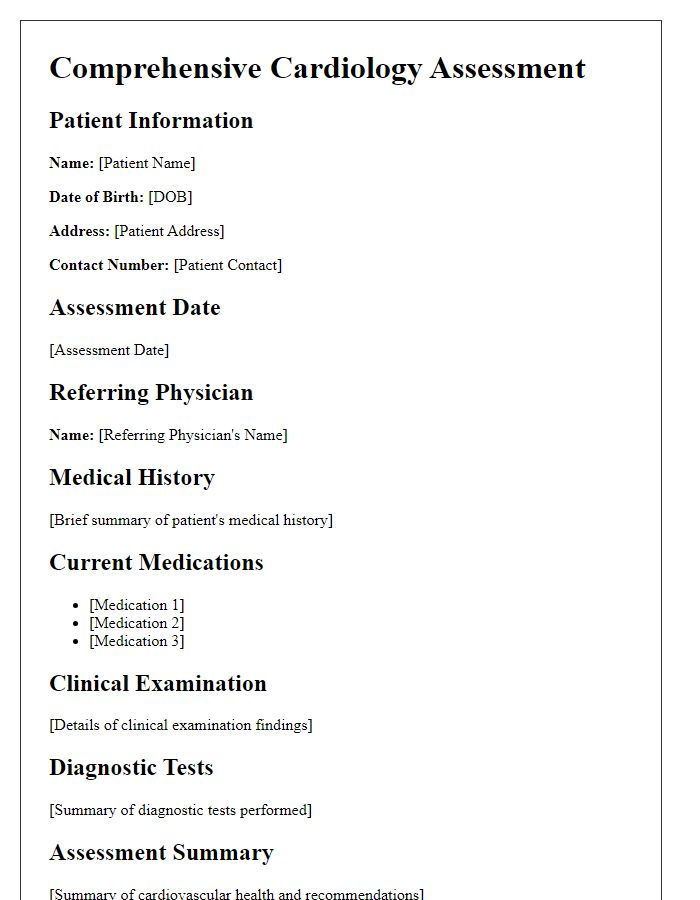
Letter template of remote cardiology assessment for telemedicine consultation.
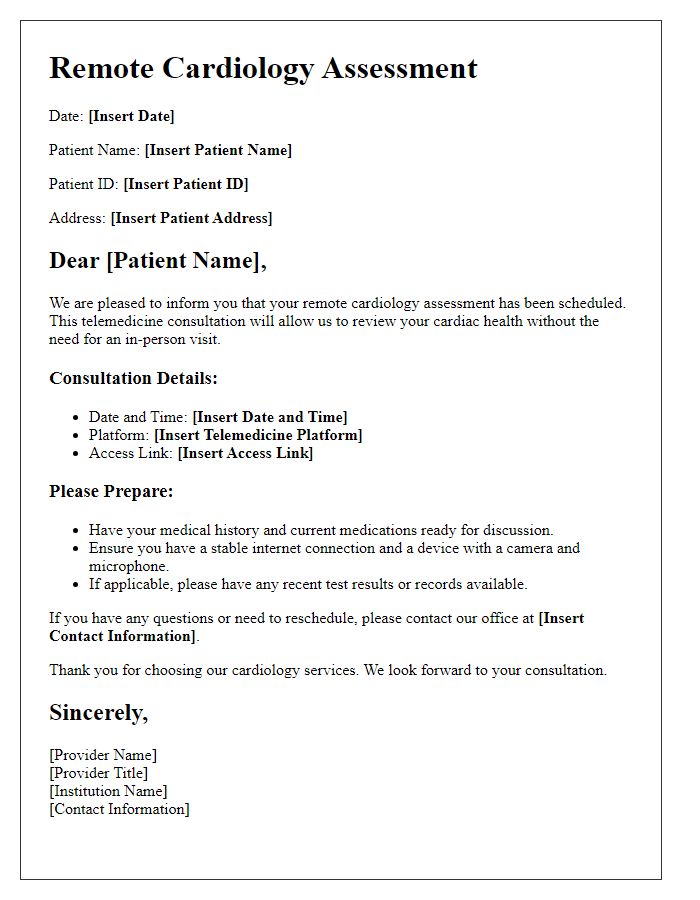

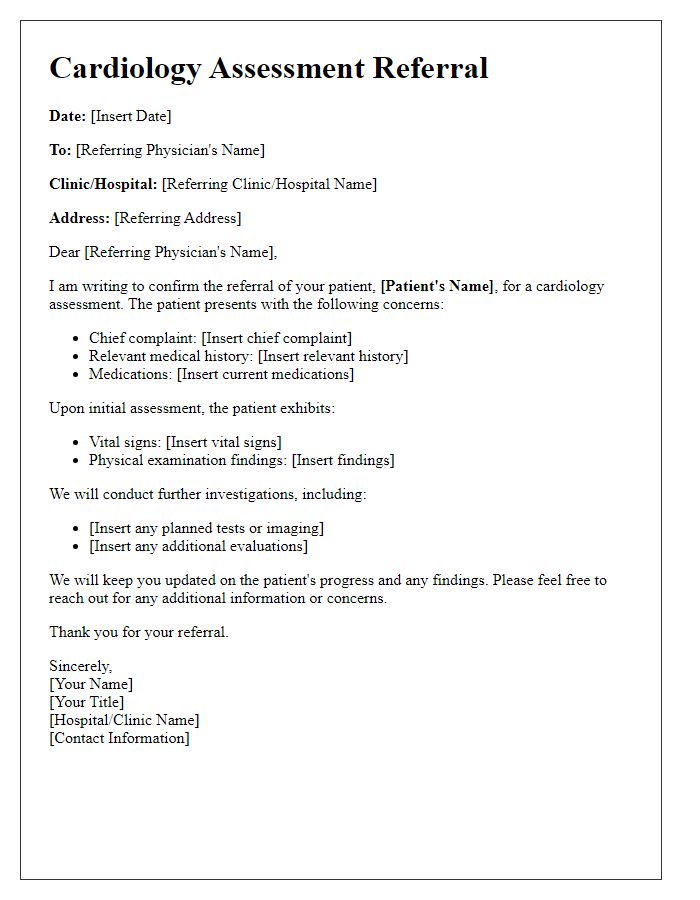
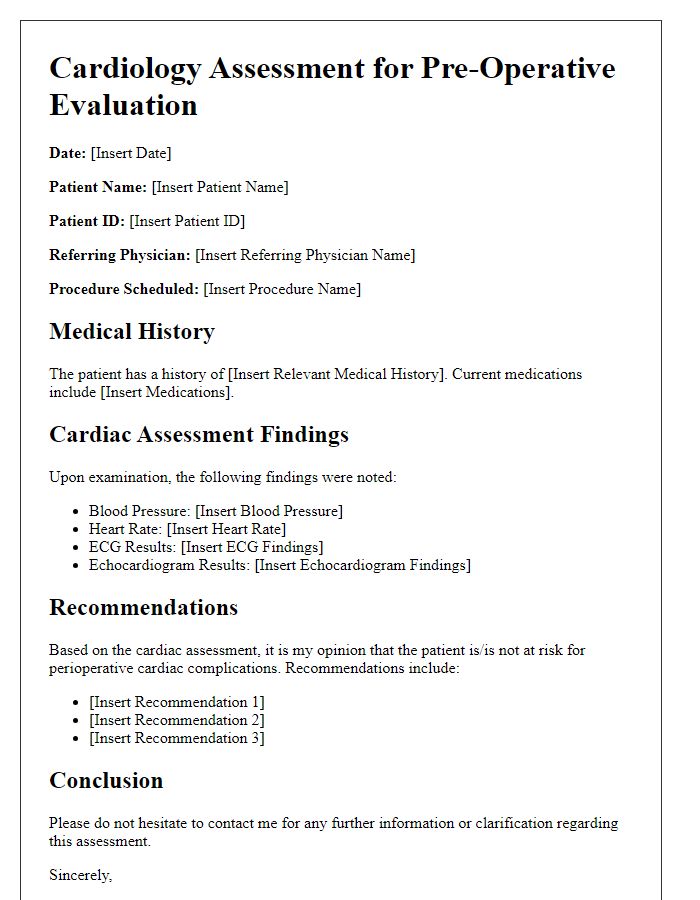
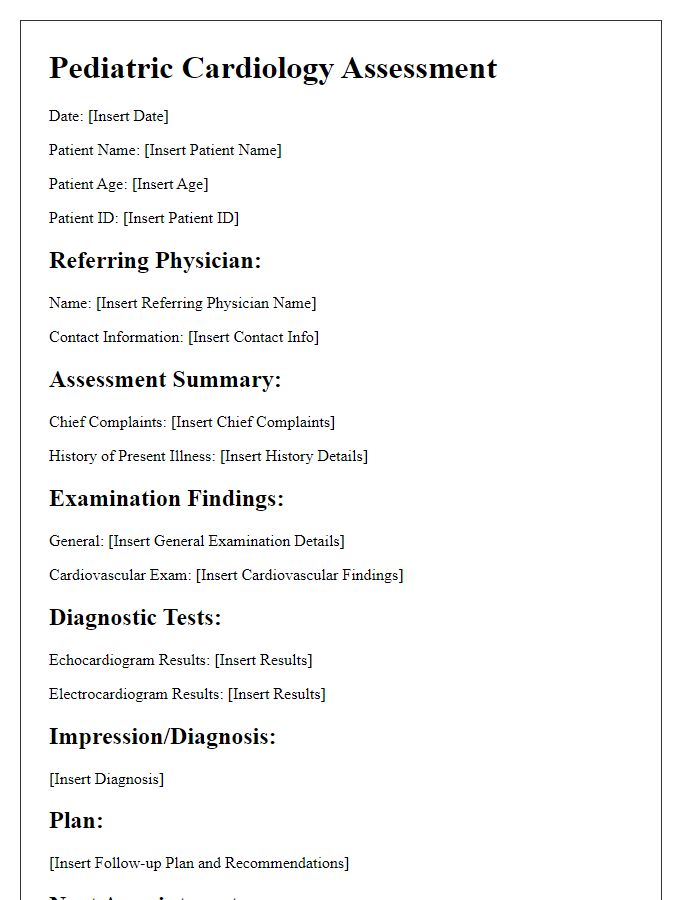
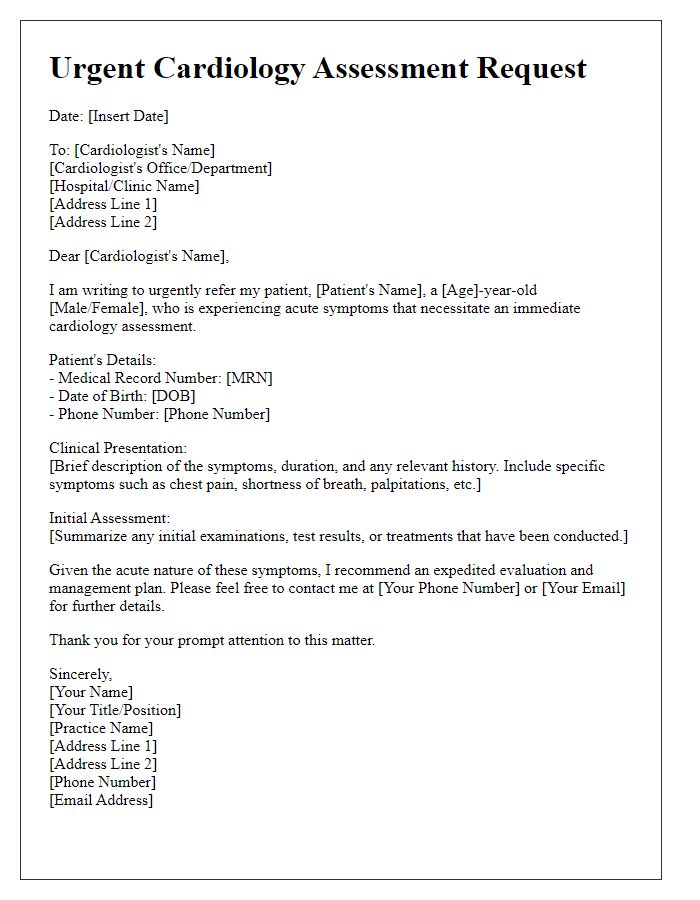
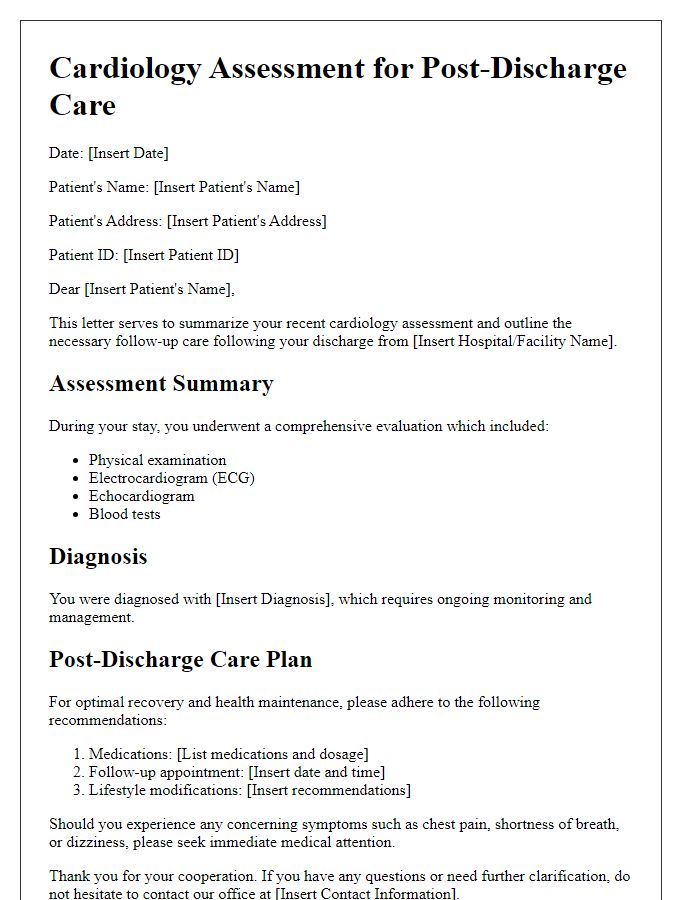
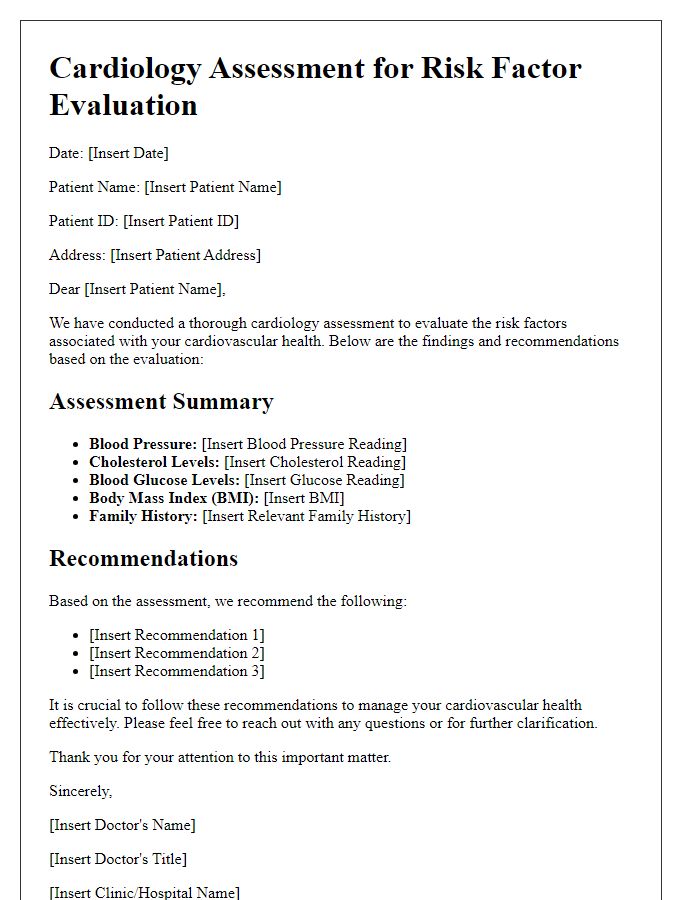
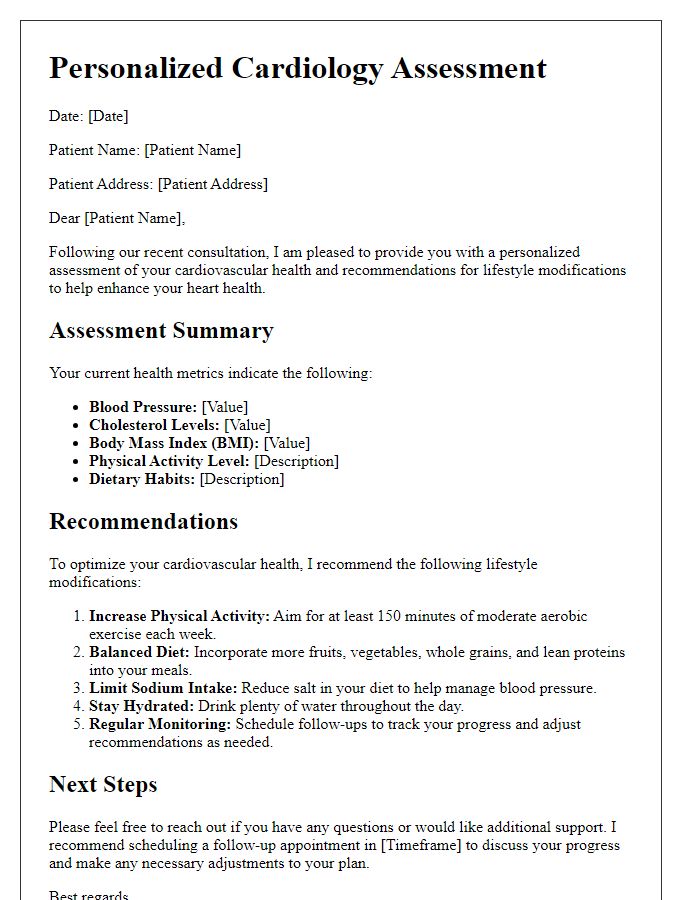


Comments